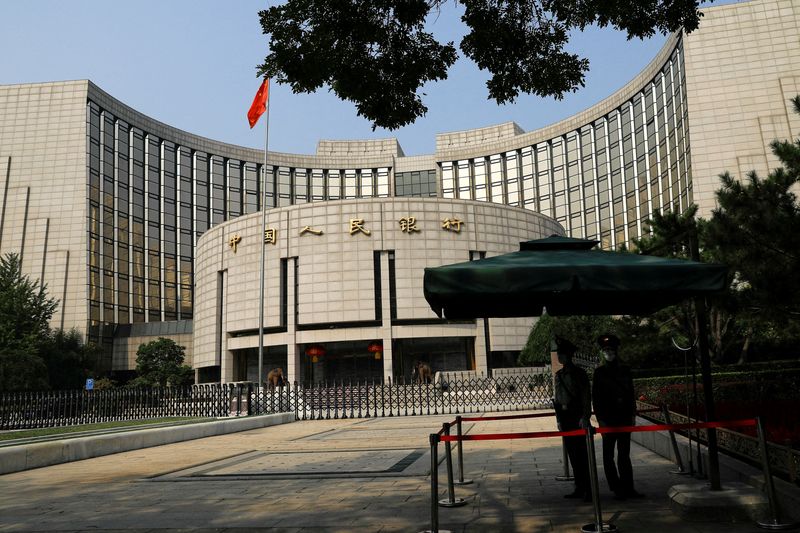China keeps lending benchmarks unchanged; economic weakness tests policymakers
2023.07.20 04:14

© Reuters. FILE PHOTO: Paramilitary police officers stand guard in front of the headquarters of the People’s Bank of China, the central bank (PBOC), in Beijing, China September 30, 2022. REUTERS/Tingshu Wang/File Photo
SHANGHAI/SINGAPORE (Reuters) -China left its lending benchmarks unchanged on Thursday, after the central bank stood pat on a key policy rate earlier this week even as signs of a faltering economic recovery called for more stimulus.
China’s economy grew at a frail pace in the second quarter, raising investor hopes for more supportive measures to ensure Beijing’s growth target for the year remains on track.
However, many market watchers said the stimulus could be targeted and limited in scale as any more rate cuts could widen the interest rate differentials with the United States further and pressure an already weak yuan. [CNY/]
The one-year loan prime rate (LPR) was kept at 3.55%, while the five-year LPR was unchanged at 4.20%.
In a poll of 26 market watchers conducted this week, all participants predicted no change to either of the two rates.
The steady LPR fixings come as the People’s Bank of China (PBOC) rolled over maturing medium-term policy loans and kept the interest rate unchanged earlier this week.
The medium-term lending facility (MLF) rate serves as a guide to the LPR and markets mostly use the MLF rate as a precursor to any changes to the lending benchmarks.
China’s central bank said last week that it will use policy tools such as the reserve requirement ratio (RRR) and medium-term lending facility (MLF) to weather the challenges facing the world’s second-largest economy.
The LPR, which banks normally charge their best clients, is set by 18 designated commercial banks who submit proposed rates to the central bank every month.
Most new and outstanding loans in China are based on the one-year LPR, while the five-year rate influences the pricing of mortgages. China cut both LPRs in June to boost the economy.








